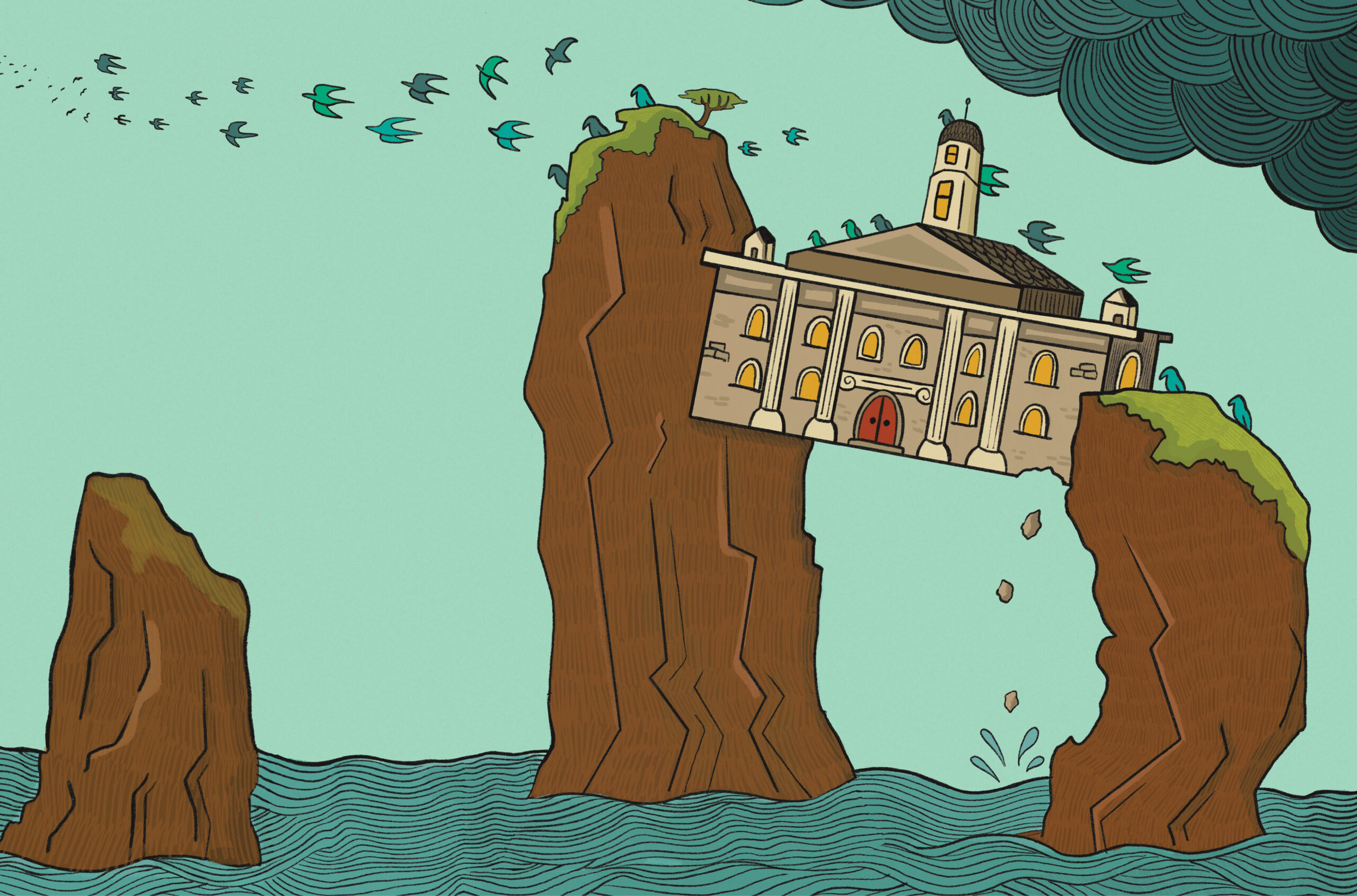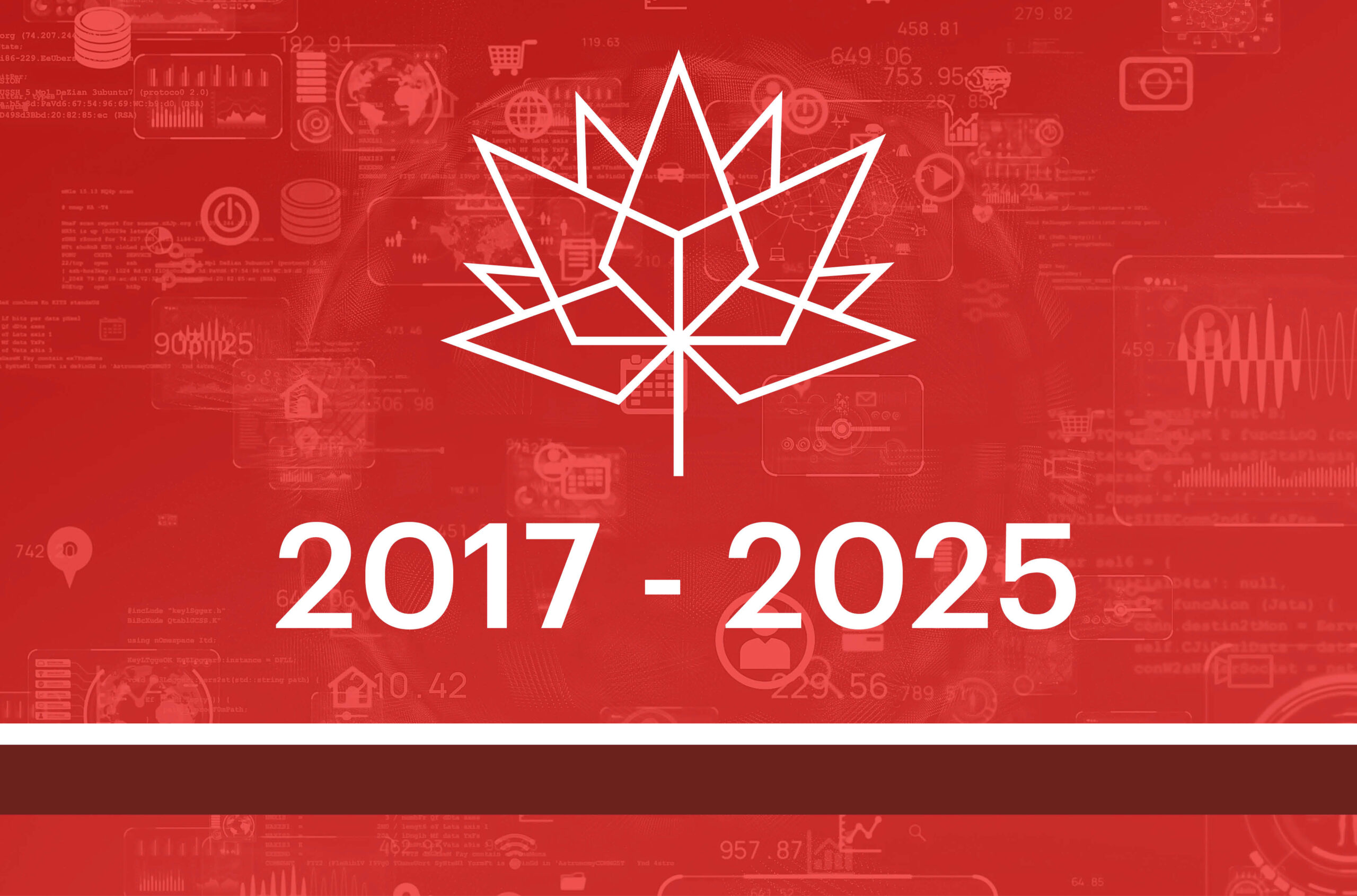Researchers gear up for cannabis legalization
The community is eager to track the wide-ranging social, economic and health impacts of this historic shift in public policy.

Sometime later this year, if all goes as planned, Canada will usher in what University of Calgary health policy researcher Fiona Clement calls “the largest cultural change in my lifetime” – cannabis will cease to be an illegal drug, ending decades of prohibition. It is a development that few people would have thought possible just a few short years ago, and researchers across the country are eager to study the wide-ranging social, economic and health impacts of this momentous shift.
The federal government had originally planned for cannabis legalization to take effect on July 1. But, due to delays in finalizing the legislation, it is likely that legal retail sales won’t begin across the country until August or later.
In anticipation of legalization, the University of New Brunswick and neighbouring St. Thomas University announced last year that they are creating a cannabis research mini-cluster in Fredericton; each university is looking to fill a new research chair to study the biomedical and social aspects of cannabis, respectively. The New Brunswick Health Research Foundation is providing $500,000 over five years for each chair, with matching funds from private-sector partners.
The Social Sciences and Humanities Research Council is currently supporting four grants related to cannabis totalling $135,000, on topics ranging from the psychosocial harms of chronic use to an economic analysis of legalization. As well, on January 16, the Canadian Institutes of Health Research announced the 14 winners of its $1.4 million in Catalyst grants to study the effects of cannabis legalization on various aspects of population health.
A major area of focus for many researchers and policy-makers will be how usage patterns change after the drug is legalized. Pamela Kaufman, a tobacco researcher at the Centre for Addiction and Mental Health in Toronto, received a Catalyst grant to study exposure to second-hand cannabis smoke, both before and after legalization. There is some evidence that cannabis smoke contains many of the same toxins as cigarette smoke, she says. “We want to look at where and how people are exposed now, and how it may change after legalization.”
Dr. Kaufman and her team have added questions about second-hand cannabis exposure to the annual CAMH Monitor Survey, which is in the field now, to gather baseline data, while future editions will track how exposure changes after legalization. They will use this and other data to create a Cannabis Informatics Monitoring System, similar to one that monitors tobacco, which will allow anyone to access data on cannabis use for research purposes. Dr. Kaufman hopes her work will be used to help provinces determine the rules around when and where people are allowed to smoke cannabis.

Cannabis consumption
Perhaps of greatest interest to health researchers is how cannabis legalization will affect overall consumption. Michael Szafron, a public health researcher at the University of Saskatchewan, says there is good baseline data on current use, including a study he published last year in the Canadian Journal of Public Health. “Post-legalization, we’ll be able to see how use changes,” he says.
A recent report by Statistics Canada found that, in 2015, 12.3 percent of Canadians aged 15 years and older had used cannabis; use was highest among those aged 18 to 24, at 28.4 percent. Statistics Canada has been gearing up for legalization: it unveiled a “cannabis stats hub” in January and launched its first National Cannabis Survey in February.
Geraint Osborne, a sociologist at the University of Alberta’s Augustana campus, has been studying recreational use of marijuana in Canada since 2004. He doesn’t expect to see a drastic increase in the number of users. “There may be a peak due to the novelty [of legalization], but usage patterns are not going to change much,” he predicts. As use becomes more normalized, the numbers may rise as more people admit to its use, but that just means the statistics are “catching up to reality,” he says.
Dr. Osborne says the federal plan, with its focus on harm reduction, is a good one – though how it plays out will depend largely on the provinces. He hopes the regulations will be formulated to encourage responsible use based on rational arguments and evidence, “rather than reefer madness.”
Though he is in favour of legalization, Dr. Szafron at U of S is concerned that it is moving too quickly. He doesn’t believe that all the kinks have been identified and worked out yet, especially when it comes to educating the public. “I would think that health advice should have been coming out by now,” he says.
In the 2018 federal budget released on February 27, the government said it will provide $62.5 million over five years for public education initiatives – starting in 2018-19. The government also announced it will earmark $10 million each to the Mental Health Commission of Canada and the Canadian Centre on Substance Use and Addiction for research that will “help inform future policy development.”
U of C’s Dr. Clement, whose research helped to inform Alberta’s policy, says legalization has so many different parts to figure out that it may take years to sort out all the details. “I don’t think we appreciated how big and complicated this policy has to be,” she says. Some aspects, such as the rules around edible forms of cannabis, could be set aside for now, she suggests, while policy-makers deal with more pressing issues like occupational health and safety, or online sales. “We need to be nimble, respond quickly and expect constant tweaks as we figure out what works and what doesn’t,” she says.

The health effects
Much of the uncertainty over what kind of health advice should be offered is a result of a dearth of research on the physiological effects of the drug. Until now, there have been few opportunities to study how cannabis affects people in both the short and the long terms. “It’s not easy to get funding to study an illegal substance,” says Scot Purdon, a clinical neuropsychologist at U of A.
Research on cannabis is tightly regulated, says M-J Milloy, a research scientist at the British Columbia Centre on Substance Use and an assistant professor in the department of medicine at the University of British Columbia. Researchers wanting to study the physiological effects of cannabis in humans require special permission from Health Canada, called a section 56 class exemption. “It’s just as difficult to study cannabis as heroin or cocaine,” he says.
Last June, Dr. Milloy organized an open letter, signed by dozens of researchers across the country, calling on the government to ease the restrictions on cannabis research ahead of legalization. So far, there have been no changes in the regulations, but Health Canada confirmed that once cannabis is removed from the Controlled Drugs and Substances Act, a section 56 exemption would no longer be required. The agency has published a short description of how it proposes to regulate research following legalization, making it easier for researchers to grow, process and possess cannabis, but these changes are focused primarily on agricultural research and product development.
Because of the past hurdles, many studies that were completed decades ago for substances like tobacco and alcohol are just now getting started for cannabis. For example, Darine El-Chaar, a clinical epidemiologist at the Ottawa Hospital Research Institute, and her colleague Daniel Corsi, have received one of the CIHR Catalyst grants to study the effects of smoking cannabis during pregnancy. They will look back through 10 years of birth records in Ontario and look at the perinatal and childhood development outcomes of the children of mothers who said they used cannabis while pregnant.
Dr. El-Chaar says she hopes the research will help guide advice to pregnant women. “People sometimes use cannabis off-label to cope with nausea during pregnancy, and we don’t know what to tell them,” she says.
Dr. Purdon at U of A is currently running a study examining the long-term effects of cannabis on behaviour and mental performance: how long after using cannabis does it continue to impair motor function, the ability to learn and sensory perception? “We don’t know much about the effects beyond a day or two,” he says. The results will help to shape rules around driving and workplace health and safety.
While it would have been preferable to have these issues settled before cannabis is legalized, Dr. Purdon says it’s unlikely the work would ever have been done without the looming deadline to concentrate minds. “I suspect we would not have the research funds or the motivation to pursue these questions if legalization was not on the horizon,” he says.

A budding industry
Beyond the social and physiological aspects of cannabis legalization, there is also a whole new business ecosystem that needs to be built, turning a black-market product into a legitimate one. Researchers are looking to both help improve the cannabis industry and study how the new sector evolves.
Youbin Zheng, an associate professor in the school of environmental sciences at the University of Guelph, is hoping to bring scientifically rigorous horticultural management strategies to the budding cannabis growing industry. “The breeding side was underground before,” he says. “They did lots of work and bred lots of things, but none of it was scientifically documented. It’s quite a mess.”
While growers have anecdotal information about how much THC is in various strains, the growing conditions – levels of light, water, nutrients and other factors – can have a big effect on the final product. Dr. Zheng says cannabis growers can learn from the greenhouse industry and academic horticulturalists about how to manage large-scale production to maintain quality and get consistent results in the levels of THC in the plant. “If we can build up a recipe for each strain, growers that follow the recipe should achieve consistent quality,” he says.
The way the retail business develops will have a major influence on the extent to which legalization meets the government’s somewhat contradictory aims of ending the illegal black market, improving safety and public health, raising tax revenue, all while avoiding a big rise in consumption. “I’m not sure the government understands that some decisions could contradict their other objectives,” says Michael Armstrong, an associate professor at the Goodman School of Business at Brock University.
The main variables affecting how the policies play out will be the minimum price, the rules around branding and marketing – and, most importantly, the availability of the drug. That is set to vary considerably across the country, with Western provinces generally allowing private retail stores and Eastern Canada opting for government-run outlets.
Ryerson University’s Brad Poulos, who studies the cannabis business says the model out West will lead to better access and is much more likely to achieve the goal of driving out the illegal market. By contrast, he is scornful of Ontario’s plan to have just 150 government outlets within two years. “Right now, there are 150 [illegal cannabis] dispensaries in Toronto alone,” he says. “The idea that the Ontario plan will come close to achieving the government’s goals is laughable.”
Dr. Poulos will also be keeping an eye on how the industry organizes itself as time goes on. Already, he says, there are signs of consolidation among producers. Some are staying focused on medical cannabis, some concentrating just on the recreational market, and some – including big names like Canopy Growth Corporation and OrganiGram – will have a foot in both camps. Dr. Poulos isn’t convinced that’s a good idea. “It’s incredibly stupid from a branding point of view,” he says. “No company sells both Aspirin and vodka.”
With the legal situation in the United States in a muddle under Attorney General Jeff Sessions, “there is a real opportunity for Canadian companies to become global leaders,” says Dr. Poulos. “The more mayhem there is in the U.S., the better for Canada,” he says. “I hope the government has the vision to create an environment where the industry can flourish.”
How the government measures the new industry is also raising interesting questions. Economists at Statistics Canada need to find a way to integrate the existing black market into their accounts, to see what the actual effect of legalization will be on the economy. “We can’t just say the economy suddenly grew by X percent because of legalization. That’s not true, because it was there before, but underground,” says James Tebrake, director general of macroeconomic accounts at Statistics Canada. “We need to update our statistical infrastructure.”
Statistics Canada is using health surveys to estimate the size of the market and trying to put a price on it by asking Canadians to report how much they paid for their weed. To ensure a continuous data series, they have to extend the data back to 1961, the baseline year for the Canadian National Accounts. That has sometimes involved asking older family members if they remember how much marijuana cost when they were young. The challenge of measuring something with so little data has been an enjoyable one, says Mr. Tebrake. “It really forces you to think, to be as innovative as statisticians can be. We’re inventing things as we go.”












Post a comment
University Affairs moderates all comments according to the following guidelines. If approved, comments generally appear within one business day. We may republish particularly insightful remarks in our print edition or elsewhere.
2 Comments
This should say it is past year use because the lifetime use of cannabis among Canadians 15 yrs or older is around 44 per cent: ”A recent report by Statistics Canada found that, in 2015, 12.3 percent of Canadians aged 15 years and older had used cannabis; use was highest among those aged 18 to 24, at 28.4 percent.”
Statistics Canada is using health surveys. I believe. Let’s celebrate! cannabis has a bright future in our country